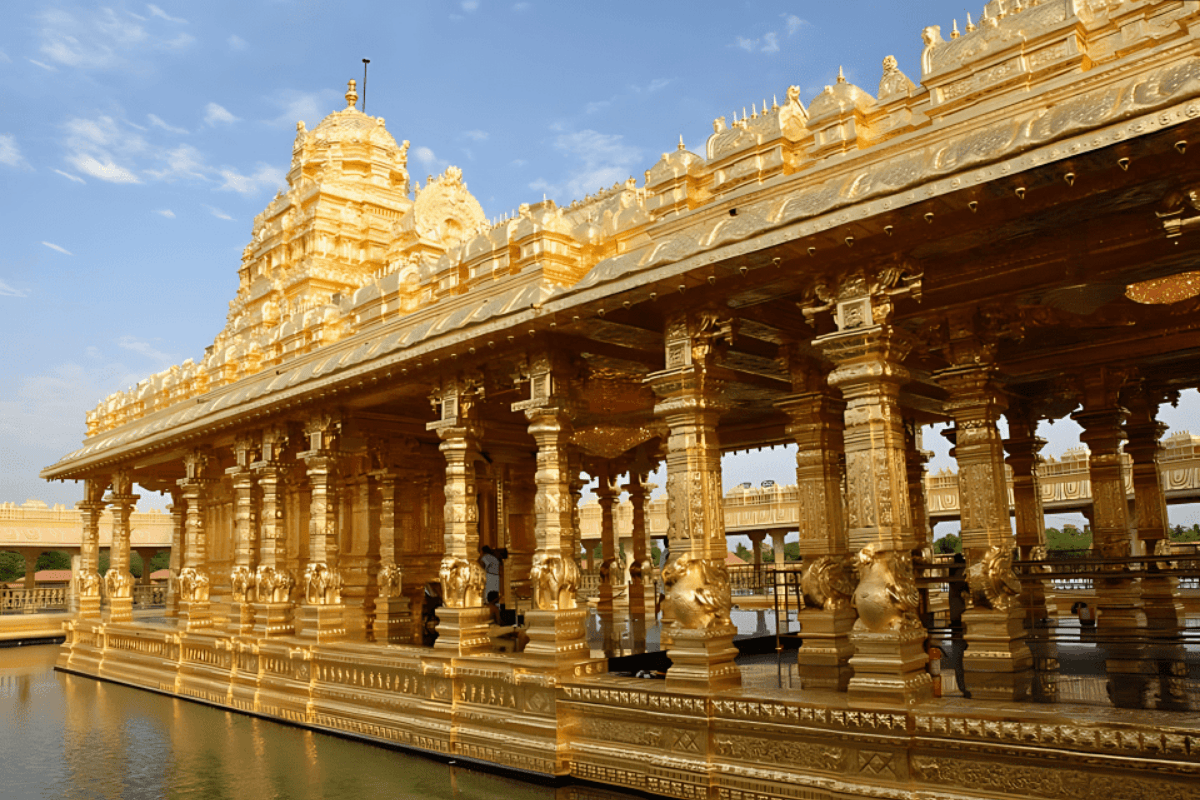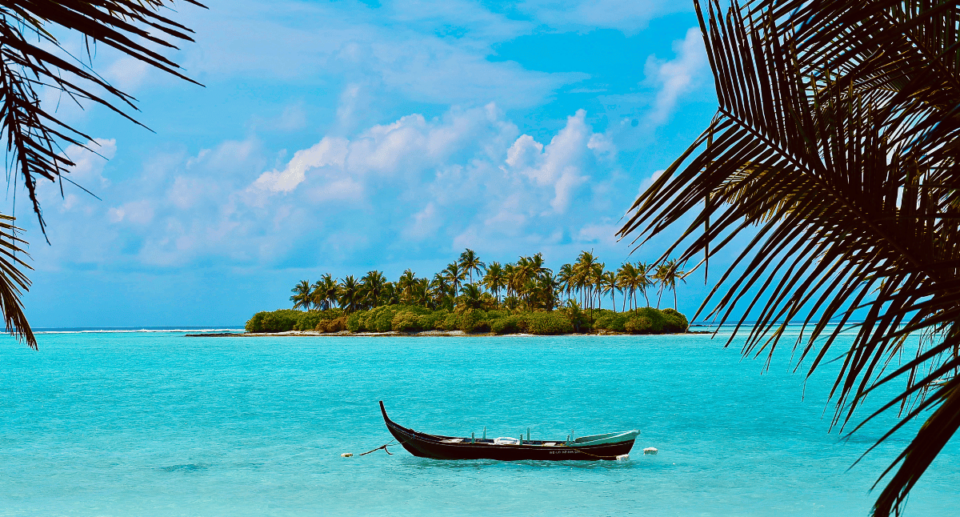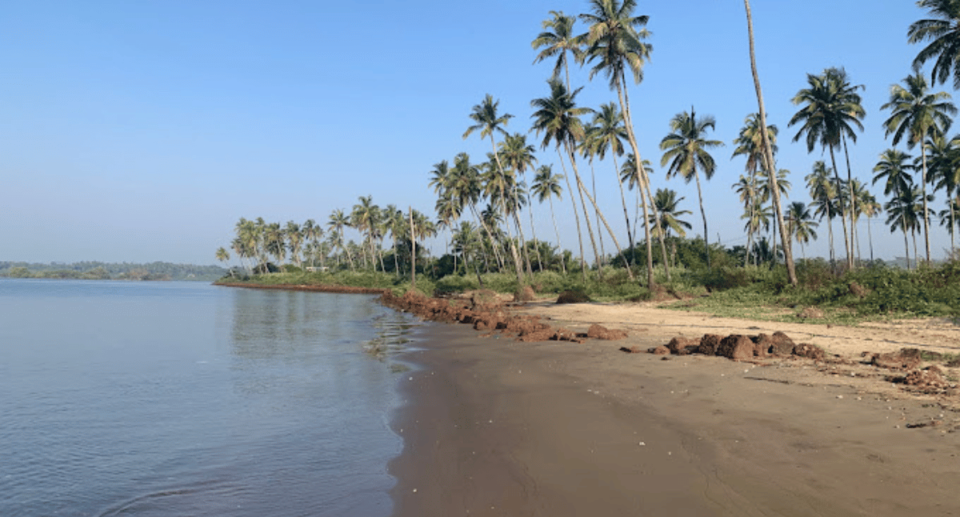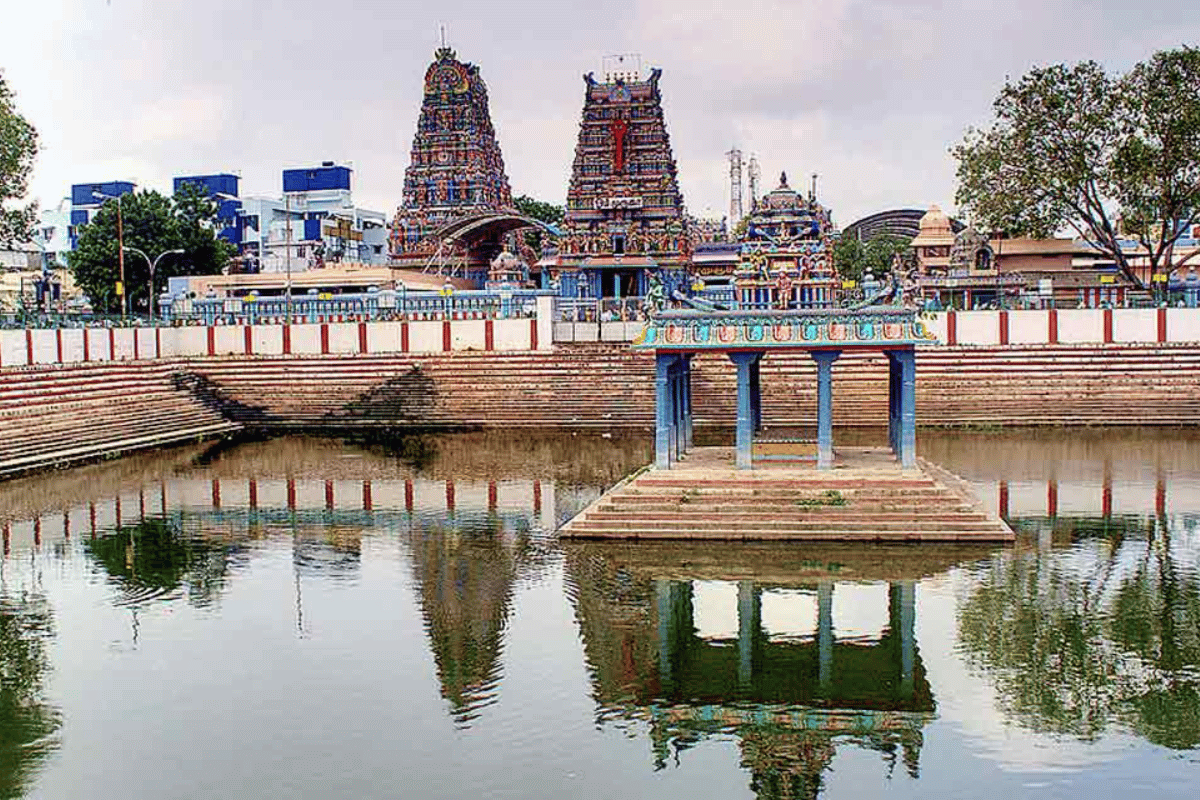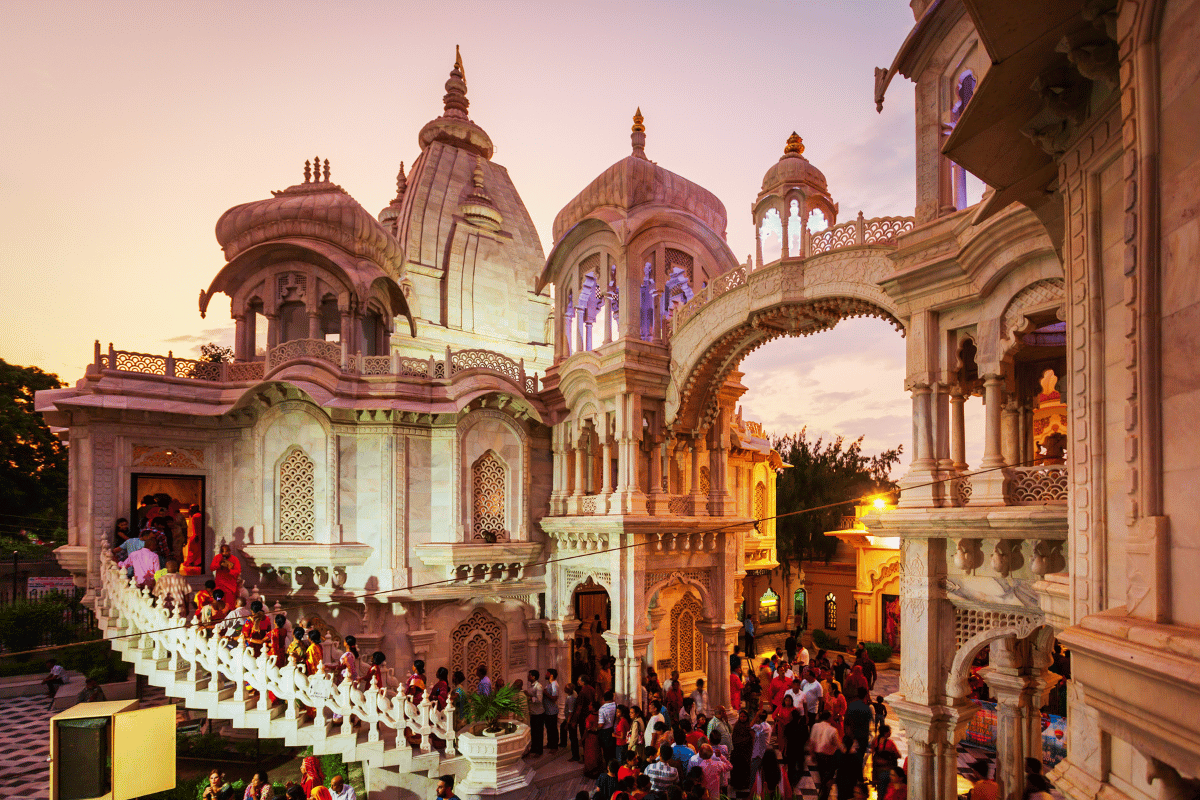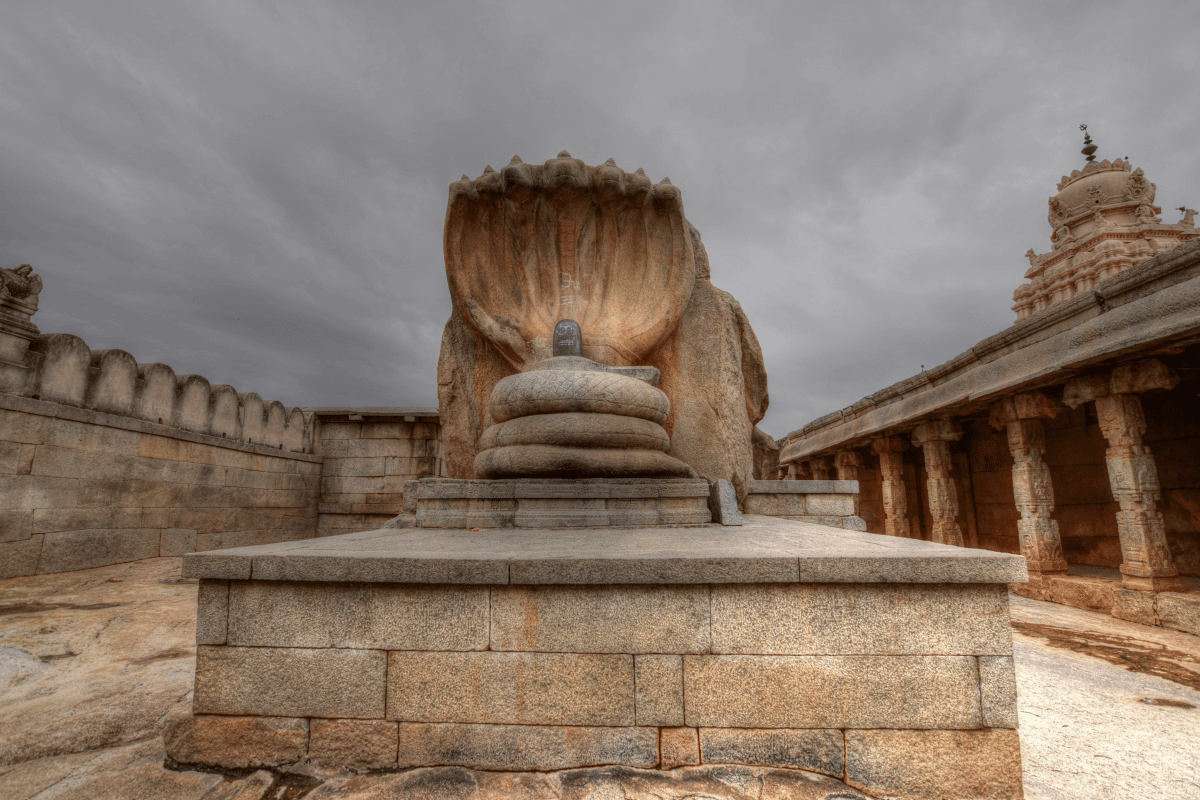Mahabalipuram Shore Temple: Unesco Heritage Site

Mahabalipuram Shore Temple is a significant historical and architectural marvel located in the town of Mahabalipuram (also known as Mamallapuram), in the Tamil Nadu state of India. It’s one of the oldest structural stone temples of South India and is a UNESCO World Heritage Site as part of the Group of Monuments at Mahabalipuram.
Table of Contents
History of Shore Temple:
The Shore Temple was built during the 7th century (around 700-728 AD) under the patronage of the Pallava King Narasimhavarman II, also known as Rajasimha. It’s a testament to the ancient Pallava architecture and reflects the maritime ambitions of the Pallava dynasty.
Pallava Dynasty:
The Shore Temple was built during the reign of the Pallava King Narasimhavarman II, also known as Rajasimha, who ruled from 700–728 AD. The Pallavas were great patrons of art and architecture, and under their rule, Mahabalipuram became a celebrated center for artistic excellence.
Name and Mythology:
The name ‘Mahabalipuram’ has interesting mythological connotations. It’s believed to be named after the demon king Mahabali who was renowned for his generosity. Another theory suggests it’s derived from ‘Mamallapuram,’ after the title ‘Mamalla’ (great wrestler) given to King Narasimhavarman I, another Pallava ruler who was also a patron of arts.
Architecture of Shore Temple:
- Structural Design: The Shore Temple is a complex of three temples, with the main temple facing east so that the sun rays shine on the shrine at dawn. It comprises two Shiva temples and one Vishnu temple in between. The two Shiva temples have pyramid-shaped towers (called ‘Shikhara’ in Dravidian architecture) and are built out of granite.
- Sculptures and Carvings: The temple is renowned for its intricate bas-reliefs, sculptures, and architectural work. The walls are adorned with images of Nandi (the sacred bull), Shiva, Vishnu, and other deities, as well as scenes from Hindu mythology.
- Shore Setting: As the name suggests, the temple overlooks the Bay of Bengal, providing a picturesque view. It’s believed that there were seven similar temples along the shore, but six have submerged over time.
- Dravidian Style: The Shore Temple is one of the earliest significant structural temples in South India. Unlike the rock-cut caves and monolithic Rathas found elsewhere in Mahabalipuram, the Shore Temple is a built structure (using cut stones) reflecting the early phases of Dravidian architecture. It served as a prototype for future temples in the region.
Significance:
- Religious Importance: The temple is a revered site for Hindus, with the shrines still holding religious significance.
- Cultural Heritage: It’s a fine example of early Dravidian architecture and has significantly contributed to India’s architectural heritage. Its sculptures and bas-reliefs are important study materials for historians and artists.
- Tourism: The Shore Temple is a popular tourist destination, attracting visitors from all over the world who come to admire its architecture and scenic beauty.
Best Places to Visit in Shore Temple
When visiting the Shore Temple in Mahabalipuram, it’s not just the main temple complex that’s of interest. The entire area is rich with various historical and architectural sites, each offering a unique glimpse into the past. Here are some of the key places and features to visit within and around the Shore Temple:

Within the Shore Temple Complex:
1. Primary Shrines:
- Shiva Temples: There are two Shiva temples, each housing a Shivalinga. They are exquisite examples of early Dravidian architecture and are adorned with intricate carvings.
- Vishnu Temple: Sandwiched between the two Shiva temples is a shrine dedicated to Lord Vishnu. Here, Vishnu is depicted in a reclining posture, also known as the Anantasayana form.
2. Sculptures and Carvings:
- Wall Reliefs: The temple walls are adorned with beautiful bas-reliefs depicting various mythological scenes and daily life.
- Nandi Sculptures: Look out for the sculptures of Nandi, the sacred bull of Shiva, positioned facing the main shrines.
3. Architectural Elements:
- Mandapas (Pavilions): These are hall-like structures used for various ceremonial purposes, showcasing intricate carvings and sculptures.
- Rathas: Although technically not within the Shore Temple, the nearby Pancha Rathas (Five Chariots) are an excellent example of monolithic Indian rock-cut architecture and are a must-visit.
Around the Shore Temple:
4. Mahabalipuram Beach:
Adjacent to the Shore Temple, the beach is ideal for a leisurely stroll and offers a picturesque view of the temple against the backdrop of the sea.
5. Other Monuments (Group of Monuments at Mahabalipuram):
- Cave Temples: Visit Krishna Cave Temple, Mahishasuramardini Cave, and Varaha Cave Temple, each with unique carvings and sculptures.
- Arjuna’s Penance: This is a massive open-air rock relief that depicts the descent of the Ganges from the heavens, led by Arjuna’s penance.
- Krishna’s Butterball: A curious natural boulder that’s precariously perched on a hillside and defies gravity.
6. Lighthouse:
Climb up the old Mahabalipuram lighthouse for a panoramic view of the entire area. The view from the top is particularly stunning at sunset.
7. Krishna’s Butter Ball:
This is a gigantic granite boulder resting on a short incline. Its seemingly precarious position is a popular photo opportunity and a marvel of natural balance.
8. Local Workshops:
Mahabalipuram is known for its stone carving industry. Visit the local workshops to see artisans crafting statues and sculptures using traditional methods.
By visiting these places, you’ll gain a deeper appreciation for the Shore Temple’s architecture, ancient craftsmen’s skill, and Mahabalipuram’s rich cultural heritage. Each site offers a unique window into the past, making your visit a comprehensive historical and cultural experience.
How to Reach Mahabalipuram Shore Temple?
Mahabalipuram (also known as Mamallapuram) is located in the Tamil Nadu state of India, about 60 kilometers (37 miles) south of Chennai (Madras).
Here’s how you can reach the Mahabalipuram Shore Temple:
From Chennai:
By Road:
- Private Car or Taxi: The most convenient way to reach Mahabalipuram from Chennai is by road. It takes about 1-1.5 hours via the East Coast Road (ECR) or the Old Mahabalipuram Road (OMR). Both routes are scenic, especially the ECR, which runs along the coast.
- Bus: State-run and private buses regularly ply between Chennai and Mahabalipuram. Buses can be boarded at various points in Chennai, including the Koyambedu (CMBT) bus station and T. Nagar. The journey takes approximately 1.5-2 hours.
By Train:
- There’s no direct train to Mahabalipuram. The nearest railway stations are in Chennai and Chengalpattu. From there, you can take a bus or taxi to Mahabalipuram.
From Other Cities in India:
By Air:
- The nearest airport is Chennai International Airport. You can hire a taxi from the airport or take a bus to Mahabalipuram. The distance is about 55 kilometers (approximately 34 miles), and it usually takes 1.5 hours by road.
By Train:
- If you’re traveling from other parts of India, you can take a train to Chennai Central or Egmore railway station. From there, continue by road to Mahabalipuram.
Within Mahabalipuram:
- Once you’re in Mahabalipuram, the Shore Temple is easily accessible. It’s a small town, and most sites, including the Shore Temple, are within walking or short driving distance.
- You can walk, hire an auto-rickshaw, or rent a bicycle or scooter to explore the town and reach the temple.
Timing to visit Shore Temple
The Shore Temple usually opens for visitors from 6:00 AM to 6:00 PM. It’s best to visit early in the morning or later in the afternoon to avoid the heat and the crowds.
Entry Ticket Price at Shore Temple
- For Indian Adults Rs.40
- For Foreigners, Rs.600
- No fee for Indian children under 15 years
Tips for Visitors:
- Dress Appropriately: Consider dressing modestly when visiting the temple as a mark of respect.
- Stay Hydrated: The coastal climate can be hot and humid, so carry water and wear sun protection.
Visiting the Mahabalipuram Shore Temple is a journey back in time to an era of magnificent architectural and sculptural achievements. The journey is well worth it, not just for the temple itself but also for the scenic beauty and cultural richness of the region.
Conservation:
Being close to the sea, the temple has faced erosion over the centuries. Various conservation efforts have been undertaken by the Archaeological Survey of India and other organizations to preserve this historic structure for future generations.
When visiting Mahabalipuram, the Shore Temple is often a highlight for many tourists, not just for its historical significance but also for the serene beauty and the craftsmanship it showcases from over a millennium ago.

